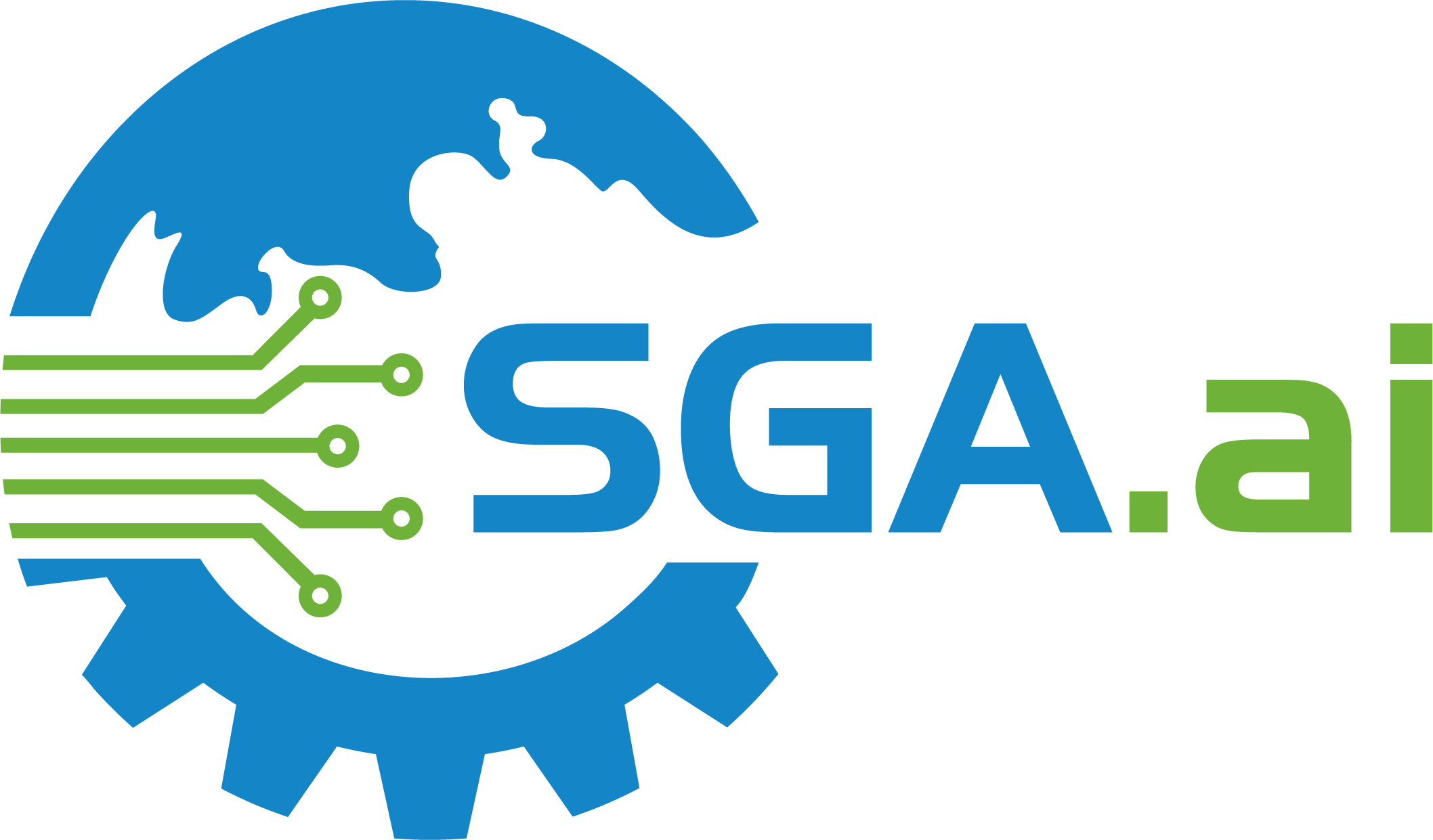Understanding Your "SGA Net Worth": What Substantial Gainful Activity Means For Disability Benefits
When you hear "SGA net worth," your mind might jump to famous personalities or their impressive financial standings, and that's a pretty common thought, actually. Yet, for countless individuals navigating the world of disability benefits, "SGA" takes on a completely different, yet equally significant, meaning. This isn't about celebrity fortunes; it's about a very real threshold that shapes eligibility for crucial support.
So, what exactly is this "SGA" we're talking about? It stands for Substantial Gainful Activity, and it's a key concept in determining who qualifies for disability benefits. Basically, to be eligible for these benefits, a person must be unable to engage in this kind of activity, which, you know, involves earning money above a certain level.
This article will help you understand what Substantial Gainful Activity truly means, how it's measured, and why its "net worth"—or rather, its financial thresholds—are so important for anyone dealing with disability benefits. We'll explore the earnings tests, the trial work period, and other factors that shape this vital determination.
Table of Contents
- What Exactly is Substantial Gainful Activity (SGA)?
- Unpacking the "SGA Net Worth" for Disability Benefits
- Navigating the Trial Work Period (TWP) and Beyond
- The Financial Side: Taxes and SGA
- Why Understanding SGA Thresholds Matters
- Frequently Asked Questions About SGA
What Exactly is Substantial Gainful Activity (SGA)?
The Core Idea Behind SGA
Substantial Gainful Activity, or SGA, is a really important concept when we talk about disability benefits. It's basically a measure of whether a person is able to perform work that involves significant physical or mental activities for pay or profit. For someone to be considered eligible for disability benefits, they must, in a way, be unable to engage in this kind of activity.
The core idea here, you know, is that if someone can earn a certain amount of money, it suggests they are capable of performing work at a substantial level. This ability to work and earn is what the Social Security Administration looks at very closely.
Earnings as a Key Measurement
It was decided quite some time ago that earnings provided a pretty objective and feasible measurement of work capacity. Because of this, an earnings test was established, and it has been the primary guide for determining SGA ever since. So, basically, how much money a person brings in is a really big factor.
A person who is earning more than a certain monthly amount, after considering certain deductions for impairment-related work expenses, is generally considered to be engaging in SGA. This "net of impairment" calculation is pretty important, as a matter of fact, because it accounts for costs directly related to a person's disability that help them work.
Unpacking the "SGA Net Worth" for Disability Benefits
How Earnings Levels Are Used
To figure out if work was SGA, you use the specific SGA earnings level that corresponds to the year or years of the claimant’s work. This means the threshold isn't static; it changes over time, so what counts as SGA in one year might not be the same in another. It's not about using a single yearly level for SGA, but rather the level that applied during the specific period the work was performed.
This annual adjustment is important because it reflects changes in the economy and the cost of living. So, basically, the amount that defines "substantial" gainful activity can shift, making it a bit tricky to keep track of without up-to-date information.
The Role of Countable Earnings
A decision about whether work is SGA, and when such SGA may have begun, should be based on information about the person's "countable earnings" and their performance. Countable earnings are what's left after certain deductions, like those for impairment-related work expenses, are taken into account. This means it's not just your gross income that matters.
For instance, if you have to pay for special transportation or equipment because of your disability to do your job, those costs might be deducted from your gross earnings to arrive at your countable earnings. This is a pretty vital distinction, as it can make a big difference in whether your work is considered SGA or not.
Navigating the Trial Work Period (TWP) and Beyond
What is the Trial Work Period?
The Trial Work Period, or TWP, is a special time designed to let beneficiaries test their ability to work without immediately losing their disability benefits. It's a way for people to try returning to work, which is pretty helpful. During this period, earnings above a certain amount are counted as a "service month."
You get a total of nine service months within a 60-month period. It doesn't matter how much you earn during a TWP month, as long as it's above a specific, relatively low threshold; it counts as one of your nine months. This period is meant to be encouraging, allowing for a gradual return to the workforce.
When Work is "Clearly Not SGA"
We define "clearly not SGA" as earnings from employment that are clearly below the Trial Work Period (TWP) service month threshold level. For the TWP service months amounts, you'd need to consult the specific guidelines for the relevant year. If your earnings fall below this very low threshold, there's no question; your work isn't considered substantial gainful activity.
This distinction is important because it helps prevent minor work efforts from triggering complex reviews of a person's disability status. It's a way of saying, "This small amount of work doesn't suggest you're no longer disabled."
The Extended Period of Eligibility (EPE)
After the Trial Work Period ends, if a beneficiary is still working and earning above the SGA level, they enter what's called the Extended Period of Eligibility (EPE). This period lasts for 36 months. During the EPE, if your earnings are above the SGA level, your benefits will typically stop. However, if your earnings fall below SGA during the EPE, your benefits can be reinstated without a new application.
For example, if a beneficiary begins work at the SGA level in the ninth TWP month and then continues working at that level, they would be in the third month of the EPE. This system, you know, provides a safety net, allowing people to try working while still having a path back to benefits if their work efforts don't pan out.
It's also worth noting that if a beneficiary returns to SGA before the first anniversary of the first day they met the statutory definition of disability, they have returned to SGA within one year of the onset date. This can have implications for their benefit status, so it's a detail to be aware of.
Also, because the period of SGA lasted only 4 months, you may evaluate and. This means that shorter periods of SGA are handled differently than longer ones, possibly allowing for a more flexible evaluation of the situation.
The Financial Side: Taxes and SGA
Understanding Tax Rates and Maximums
When you're working, even while receiving disability benefits, taxes are always a part of the picture. The 7.65% tax rate is the combined rate for Social Security and Medicare. This is a pretty standard deduction from your earnings.
The Social Security portion, known as OASDI (Old-Age, Survivors, and Disability Insurance), is 6.20% on earnings up to the applicable taxable maximum amount. This maximum amount changes each year, so there's a cap on how much of your earnings are subject to this specific tax. The Medicare portion, on the other hand, does not have a taxable maximum, so all your earnings are subject to that part of the tax.
Understanding these tax implications is a part of knowing your true "SGA net worth" in terms of how much income you retain. It’s not just about the gross earnings, but what you actually take home after these deductions.
Why Understanding SGA Thresholds Matters
Avoiding Denials and Complications
Knowing the SGA rules is incredibly important to avoid potential denials or complications with your disability benefits. For instance, if you're found to be engaging in SGA without or even with a visual impairment, it could lead to a denial. The system uses specific codes, like N33, for these types of denials.
The rules around SGA are quite detailed, and sometimes, complicated systems changes prevent new rules from being created easily. This means the existing guidelines are very much in force and need to be followed carefully.
The 30 calendar days requirement is separate from the consideration of SGA or whether an individual worked long enough to learn how to do the work, although the 30 calendar days may be a factor in some evaluations. This just goes to show how many different elements can play a part in a disability determination.
If you're unsure about how your work or earnings might affect your benefits, it's always a good idea to seek advice. Learning more about disability benefit rules on our site can be a helpful first step, and you can also find more information about Social Security Administration guidelines directly.
Frequently Asked Questions About SGA
What is the main purpose of the SGA earnings test?
The main purpose of the SGA earnings test is to provide an objective and feasible way to measure a person's ability to work. It helps determine if someone is performing work that is "substantial" enough to indicate they are no longer disabled under the Social Security rules. It's basically a financial benchmark.
Do the SGA earnings levels change every year?
Yes, the SGA earnings levels are adjusted periodically, typically annually, to account for changes in the national average wage index. This means the specific monthly amount considered SGA can be different from one year to the next, so it's important to check the current figures for the relevant period.
Can I work at all while receiving disability benefits?
Yes, you can work while receiving disability benefits, especially during the Trial Work Period (TWP). The TWP allows you to test your ability to work for a certain number of months without your earnings affecting your benefit payments, regardless of how much you earn (as long as it's above a very low threshold). After the TWP, earnings above the SGA level can affect your benefits, but there are still provisions like the Extended Period of Eligibility.

Job Openings - SGA

Home - Student Government Association

SGA President Application – Corban SGA